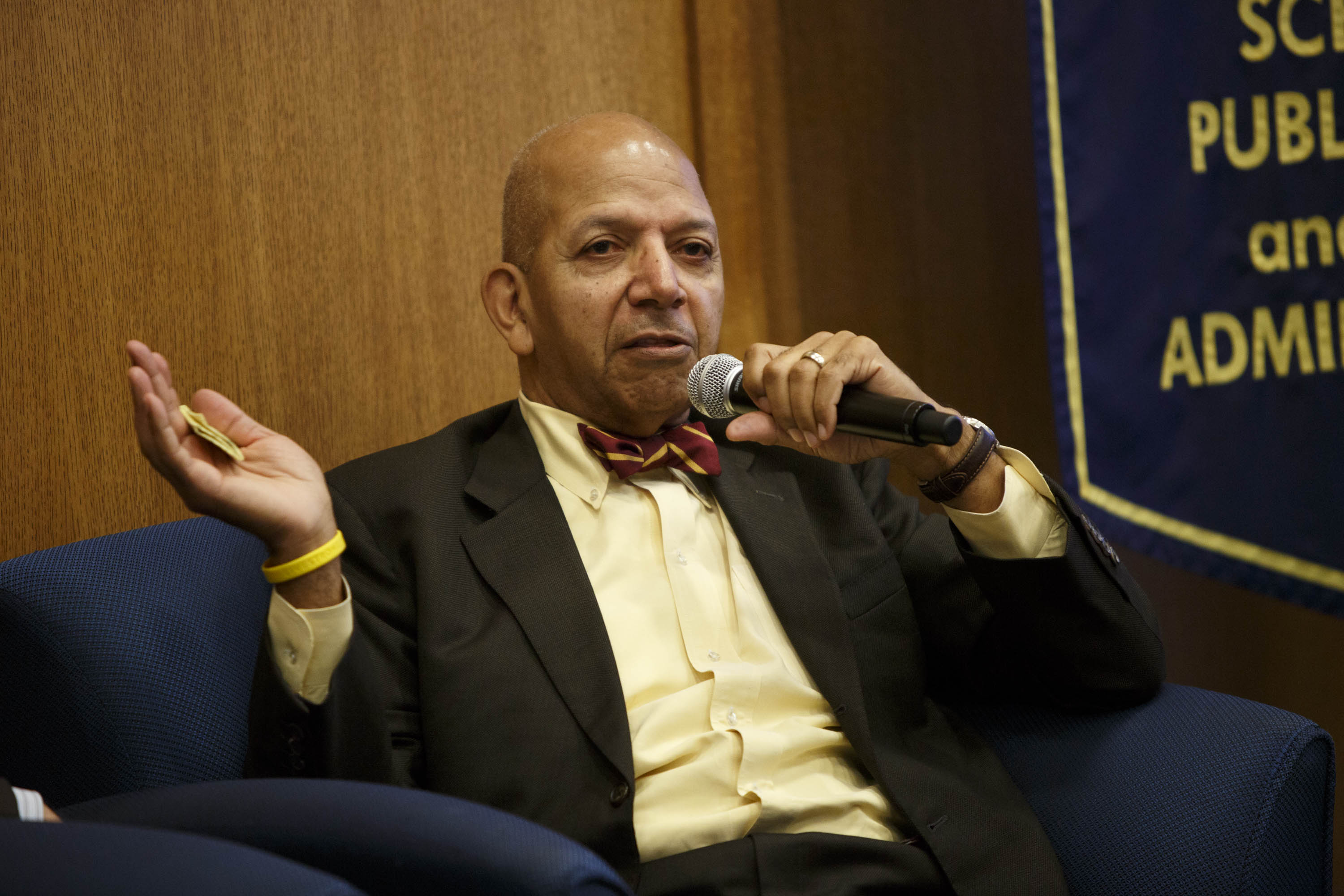By Kristen Mitchell
Former D.C. Mayor Anthony A. Williams (D) likened the vast changes the city has undergone over the past 50 years to climbing a mountain. Washington, D.C., has a solid foundation—a base camp—from which the leaders of tomorrow can continue to build.
“We’re making this ascent up the mountain to the city that we dream of and the city we envision, and the top of this mountain is sustainable, inclusive, diversified growth,” he said.
After an era of good governance and investment, Mr. Williams said, local leaders are in a better position to reach the top. The former mayor and other Washington, D.C., development professionals spoke at the George Washington University Museum and The Textile Museum Thursday as part of a discussion on the Williams administration’s development legacy.
The event, hosted by GW’s Center for Washington Area Studies, aimed to examine the development choices made during Mr. Williams’ time in office and evaluate, a decade later, what worked and what didn’t. The center studies Washington, D.C. area neighborhoods and communities, and is a joint project by GW’s Trachtenberg School of Public Policy and Public Administration and the GW Institute of Public Policy.
Mr. Williams served as mayor from 1999 to 2007. He is credited with restoring the city’s finances, improving the performance of government agencies and investing in infrastructure and human services. His administration and the D.C. Council developed a plan, titled “Vision for Growing an Inclusive City.” That plan aimed to attract new residents while maintaining affordability and encouraged mixed-use development downtown over single-use office buildings.
In the years since the plan was published, the city’s housing market has boomed. Mr. Williams is currently the chief executive officer of the Federal City Council, an organization that focuses on addressing challenges facing the District.
Ramon Jacobson, acting director of Washington, D.C.’s Local Initiatives Support Corporation office, moved to the city in 1998. At the time, the nation’s capital was more like a Rust Belt city, he said. The District didn’t have a lot of money, faced significant population loss and saw a growing number of vacant and abandoned buildings.
“There were a lot of things that needed to be done,” Mr. Jacobson said.
Mr. Williams’ commitment to improving the city gave young people “optimism and hope,” said Aakash Thakkar, senior vice president of land acquisition and development for EYA. Developers flocked to Washington, D.C., because there has been a demand for it, starting with the Northwest corridor.
“My hope, and everyone’s thought, is that improvement has already begun to spread across the rest of the wards,” he said. “The progress is happening, I think the opportunities are greater than ever, and I think we should continue to move in that direction.”
Developers, city planners and local leaders must also continue to address the need for affordable housing, better schools and increased options for grocery shopping, Mr. Thakkar said.
The discussion, moderated by veteran journalist Tom Sherwood, focused mainly on the development during Mr. Williams’ administration, which included making a deal to bring a Major League Baseball team to the city. Panelists also were asked about the city’s bid for Amazon’s second headquarters and plans to keep the FBI headquarters downtown, after previous proposals to relocate it to the suburbs.
Mr. Williams said he expects plans for the FBI building to change again, as many long-term projects do. It would be better for the city if the building moves and that space near the National Mall could be redeveloped for mixed use, he said.


